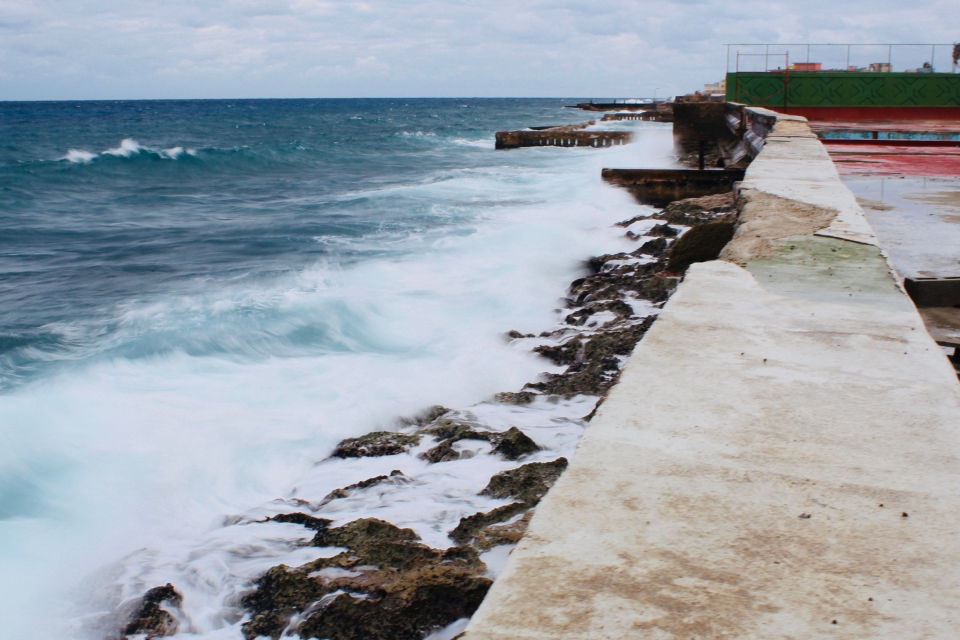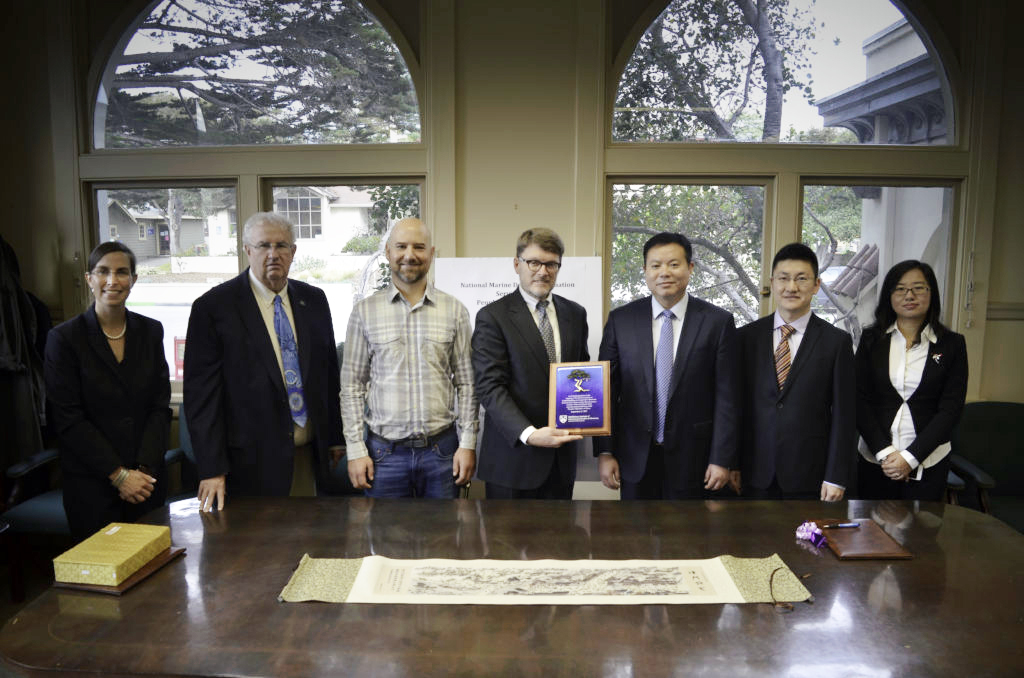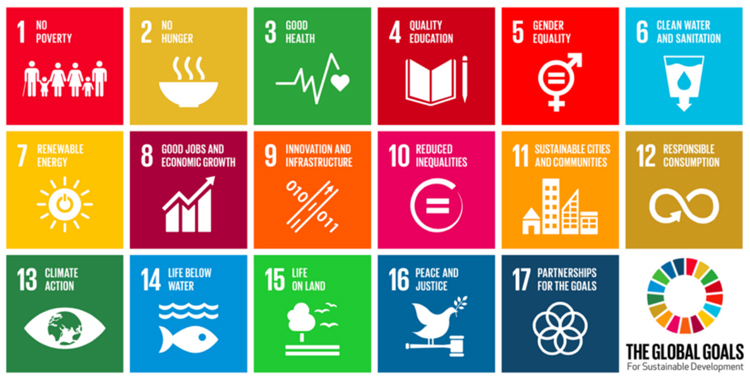Current Research

The Center for the Blue Economy has ongoing research projects, partnering with U.S. and international organizations, and employing Graduate Research Assistants to achieve its objectives.
The Center for the Blue Economy believes that policies and practices affecting ocean and coastal resource management decisions should be informed by the perspectives and tools of economics, and based on reliable, consistent, and comprehensive data. We pursue projects that have tangible, real-world impacts, giving our Environmental Policy graduate students the opportunity to gain valuable research experience.
Research Projects and Partners 2011-2024
| Project Name | Partner/s | Year/s |
| Blue Paper: Ocean Economy Employment | World Resources Institute | 2024-2025 |
| Santa Cruz County Climate Resilience Project | Santa Cruz County, Integral LLC | 2024-2026 |
| Morro Bay Estuary Climate Resiliency Transportation Plan | San Luis Obispo Council of Governments & Environmental Science Associates (ESA) | 2024-2024 |
| Update to Coastal Population Report and ENOW Database | NOAA-Coastal Management | 2023-2024 |
| White Shark Research and Education on the Central Coast | Stanford | 2023-2025 |
| National System of Natural Capital Accounts (NCAs) | NOAA | 2023-2024 |
| Benefits of Ocean Observing Catalog | NOAA | 2023-2024 |
| Measuring and Establishing a Baseline for the Caribbean Blue Economy Development | Inter-American Development Bank -IADB | 2023-2024 |
| National Climate Assessment 5: Oceans Chapter | NOAA | 2023-2024 |
| A Guide to Ocean Accounting Beyond GDP-Natural Capital in Ocean Accounts | Global Ocean Accounts Partnership, a UN sponsored alliance, led by University of New South Wales | 2023-2024 |
| A Guide to Creating Core Ocean GDP Accounts | Global Ocean Accounts Partnership, a UN sponsored alliance, led by University of New South Wales | 2022-2023 |
| The Economic Impacts of the Maine Seafood Sector | Seafood Economic Accelerator for Maine & The Center for Business and Economic Research, University of Southern Maine | 2022-2023 |
| Assessing the Economic Valuation of the Great Lakes | NOAA-Coastal Management | 2022-2023 |
| The Economics: National Ocean Watch (ENOW) data set project | NOAA—Tetra Tech, Inc. | 2021-2024 |
| Business Economic Analysis for West Coast Based Urchin Ranching | NOAA-University of San Diego | 2021-2022 |
| Review of Literature and Existing Data Sources Related to Recreational Uses of the California Coast | Natural Resources Defense Council—Oceans Program | 2021-2022 |
| Creation of Extended Ocean Economic Accounts for the Mid-Atlantic Region | Coastal States Stewardship Foundation (CSSF)-Mid-Atlantic Regional Ocean Council (MARCO) | 2021-2022 |
| The Blue Potential on Svalbard: A New Hub for Arctic Fisheries? | Fridtjof Nansen Institute | 2020-2022 |
| The Value of America’s Estuaries | TBD Economic | 2020-2021 |
| Assessing the Market and Non-market Value of Hazard Prevention, Preparedness and Recovery Program Activities | NOAA-Eastern Research Group | 2020-2021 |
| Translating Climate Uncertainty to Climate Risk in Support of Water Resource Infrastructure Adaptation Decisions | NOAA, Dept. of Commerce, University of Southern Maine | 2019-2021 |
| Assessing the Market and Non-market Value of Hazard Prevention, Preparedness and Recovery Program Activities | NOAA-Eastern Research Group | 2019-2021 |
| Measuring the Economic Benefits Associated with the Southern Sea Otter in Elkhorn Slough | Monterey Bay Aquarium | 2019-2020 |
| Preliminary Assessment of the Blue Economy in Kenya and Tanzania | World Wildlife Fund-Nicholas Institute for Environmental Policy Solutions Duke University | 2019-2020 |
| Economic Evaluation of Sea Level Rise Adaptation Options For West Cliff Drive and environs in Santa Cruz, CA | City of Santa Cruz-Dave Revell/Revell Coastal | 2019-2020 |
| Coordination and Technical Support for U.S. Ocean Economic Satellite Account to Assure Consistency with International Standards | NOAA-Coastal Management | 2019-2020 |
| Assessment of Economic Benefits of Coastal and Inland Ecosystems Restoration with a Special Focus on Fisheries and Aquaculture | Food and Agriculture Organization of the United Nations (UN-FAO) | 2019-2020 |
| AlaskaNor: Opportunities for Blue Growth in Alaska and North Norway | Norwegian Ministry of Foreign Affairs-High North Center for Business and Governance, Nord University | 2018-2021 |
| Transportation Corridor Study for Highway 1 | California Department of Transportation-ASSOCIATION OF MONTEREY BAY AREA GOVERNMENTS | 2018-2020 |
| Developing a Methodology for Estimating the Economic Benefits of Ocean Observing Systems | U.S. Integrated Ocean Observing Systems (IOOS) Association-NOAA | 2018-2020 |
| Improved flood forecasts and economic data | NOAA-Eastern Research Group | 2018-2020 |
| Estimating the economic impact of defense related spending in the Monterey Bay | Monterey Bay Defense Alliance | 2018-2019 |
| Comprehensive Review of the Prototype U.S. Ocean Economic Satellite Account | NOAA-Eastern Research Group | 2018-2019 |
| Ecosystem Service Assessment in the Stillaguamish River Estuary | NOAA-Washington State Department of Fish and Wildlife | 2017-2021 |
| Development of a Prototype of a Community Risk Assessment Process for Shoreline Erosion Response Using Southern Monterey Bay | NOAA-Sea Grant | 2017-2018 |
| San Diego Regional Climate Collaborative Regional Economic Vulnerability Study | NOAA-Coastal Resilience | 2017-2018 |
| Mid Atlantic Coastal Resiliency Study | Mid-Atlantic Regional Ocean Council (MARCO) | 2017-2018 |
| Development of the U.S. Ocean Economic Satellite Account | NOAA-Bureau of Economic Analysis | 2017-2018 |
| Defining and measuring the blue technology sector | NOAA-Eastern Research Group | 2017-2018 |
| Defining and measuring the ocean economy of US Island Territories | NOAA-Eastern Research Group | 2017-2018 |
| Bangladesh: Blue Economy & Sundarbans Fisheries Assessment Report | World Bank-Duke University | 2017-2018 |
| Working Group on Water Quality Management | The Southern California Coastal Water Research Authority | 2016-2017 |
| Arctic Economic Analysis | World Wildlife Foundation | 2016-2017 |
| Maritime Economy Study | University of Massachusetts at Dartmouth | 2016-2017 |
| Economic Effects of Sea Level Rise in Monterey Bay | The Nature Conservancy | 2015-2018 |
| Natural Infrastructure Project | Lloyds of London | 2015-2017 |
| Research and Analysis of proposed Chumash Marine Sanctuary | Sierra Club | 2012-2015 |
| Research and Analysis of economic consequence of offshore oil drilling | Southern Environmental Law Center | 2012-2015 |
MOUs and MOAs

The Center for the Blue Economy enters into formal cooperative agreements with like-minded organizations to give a framework for our cooperation. Memorandums of Understanding (MOU) and Memorandums of Agreement (MOAs) guide our partnerships with these institutions.
|
Year |
Partner Organization |
Purpose |
Status |
|
2011 |
CSUMB: California State University, Monterey Bay |
Academic Exchange |
Current |
|
2011 |
UCSC: University of California, Santa Cruz |
Academic Exchange |
Current |
|
2013 |
Shanghai Ocean University |
Academic Exchange |
Current |
|
2015 |
Korea Maritime Institute |
Research Exchange |
Current |
|
2015 |
The Nature Conservancy |
Research and Internships for Students |
Current |
|
2016 |
Woods Hole Oceanographic Institute |
Creation of US Ocean Satellite Account |
Current |
|
2017 |
NMDIS: National Marine Data and Information Service, State Oceanic Administration, China |
Academic and Research Exchange |
Current |
|
2017 |
The Ocean Foundation |
Research and Internships for Students |
Current |
CBE Summer Fellow Host Organizations
The Center for the Blue Economy Summer Fellowships prepare students for careers that have an immediate positive impact on ocean and coastal sustainability. Below is our list of partner organizations that host CBE Summer Fellows. Research and deliverables produced by the students during these fellowships is sometimes published by the organizations or the CBE.
|
Year |
Partner Organization |
|
|
2011–23 |
Wild Aid |
|
|
2011–23 |
World Wildlife Fund (WWF) |
|
|
2011-23 |
Environmental Defense Fund (EDF) |
|
|
2011-23 |
Conservation International |
|
|
2011-18 |
IUCN (International Union for Conservation of Nature) |
|
|
2012 |
Jane Goodall Institute |
|
|
2012 |
Tobacco Caye Marine Station |
|
|
2012–23 |
World Resources Institute |
|
|
2012-13 |
Fish Wise |
|
|
2012-18 |
One Reef |
|
|
2012-15 |
United Nations Education, Scientific, and Cultural Organization (UNESCO) |
|
|
2013-23 |
National Oceanic and Atmospheric Administration (NOAA) |
|
|
2013 |
Driscoll’s |
|
|
2013 |
KAI Marine Services |
|
|
2013 |
Ocean Recovery Alliance |
|
|
2013–21 |
Oceana |
|
|
2013 |
Tree Kangaroo Conservation Program |
|
|
2013-17 |
Save the Waves |
|
|
2013-18 |
National University of Galway, Socio-Economic Marine Research Unit |
|
|
2013-17 |
Maersk Drilling and Shipping |
|
|
2014 |
Eco Viva |
|
|
2014–16 |
Environmental Justice Foundation |
|
|
2014 |
Scripps Institution of Oceanography, UCSD |
|
|
2014–18 |
The Nature Conservancy |
|
|
2014-16 |
United Nations Environment Programme (UNEP) Global Programme of Action |
|
|
2014-23 |
National Ocean Economics Program |
|
|
2015–16 |
Both Company |
|
|
2015–23 |
California Coastal Commission (CCC) |
|
|
2015–16 |
Root Solutions/Marine Mammal Center |
|
|
2016 |
Pelagic Data Systems |
|
|
2017–18 |
Think Beyond Plastics |
|
|
2018-23 |
The Nature Conservancy |
|
|
2018 |
E2E Foundation |
|
|
2018-23 |
Business for Social Responsibility |
|
|
2018-23 |
Monterey Bay Fisheries Trust |
|
| 2019 |
Alfred Wegener Institute, German Arctic Office |
|
|
2019 |
Tijuana River National Estuarine Research Reserve |
|
|
2020-23 |
Ocean Protection Council |
|
|
2020-23 |
Seafood Solutions |
|
|
2020-23 |
Surfrider |
|
|
2021-23 |
Inland Ocean Coalition |
|
|
2021 |
NYC Mayor’s Office of Resiliency |
|
|
2021 |
Whale Shark and Oceanic Research Center |
|
|
2021 |
Anthropocene Institute’s Protected Seas |
|
|
2021 |
Pacific Ocean Energy Trust |
|
|
2021 |
Humboldt County - Planning and Building Department |
|

The Blue Economy and U.N. Sustainable Development Goals
The Blue Economy comprises the economic activities and supporting institutions, relationships, and choices that create sustainable wealth from the world’s oceans and coasts. The Center examines ways that ocean and coastal resources can support economic development that provide decent livelihoods and maintains, restores, and enhances the critical coastal and marine ecosystems that provide the foundations for human wellness and prosperity.
The 2030 Agenda for Sustainable Development, adopted by all United Nations Member States in 2015, provides a shared blueprint for peace and prosperity for people and the planet, now and into the future. At its heart are the 17 Sustainable Development Goals (SDGs), which are an urgent call for action by all countries - developed and developing - in a global partnership. They recognize that ending poverty and other deprivations must go hand-in-hand with strategies that improve health and education, reduce inequality, and spur economic growth – all while tackling climate change and working to preserve our oceans and forests.
The Center’s work aligns with the UN’s Sustainable Development Goals:
|
Sustainable Development Goal |
Implications for the Blue Economy & Blue Economic Development |
|
SDG 2: End hunger, achieve food security and improved nutrition and promote sustainable agriculture |
- promotes sustainable fisheries and aquaculture as key food sources. Sustainable food supplies from the ocean will require new sources such as plant aquaculture. |
|
SDG 3: Ensure healthy lives and promote well-being for all at all ages |
- requires clean water as essential to human and ecosystem health, as well as supporting the emotional well-being humans in all stages of their lives. |
|
SDG 7: Ensure access to affordable, reliable, sustainable and modern energy for all |
- includes the fast emerging uses of natural ocean processes to generate electricity, including offshore wind. |
|
SDG 9: Build resilient infrastructure, promote inclusive and sustainable industrialization and foster innovation |
- requires major efforts to create new ocean products and shift towards production processes that restore ocean health and address climate change. |
|
SDG 11: Make cities inclusive, safe, resilient and sustainable |
-requires that coastal cities are resilient to climate change impacts and maintain coastal ecological health. |
|
SDG 12: Ensure sustainable consumption and production patterns |
- will require that waste streams that enter marine ecosystems are reduced and ultimately eliminated. |
|
SDG 13: Take urgent action to combat climate change and its impacts |
- includes economic opportunities and challenges arising from the ocean’s critical role in the earth’s carbon cycle. |
|
SDG 14: Conserve and sustainably use the oceans, seas and marine resources |
- promotes the restoration of marine ecosystems to their fully-functional and healthy states. |
|
SDG 17: Revitalize the global partnership for sustainable development |
- requires integrated actions across sectors and boundaries because the oceans are our most globally shared natural resource. |
